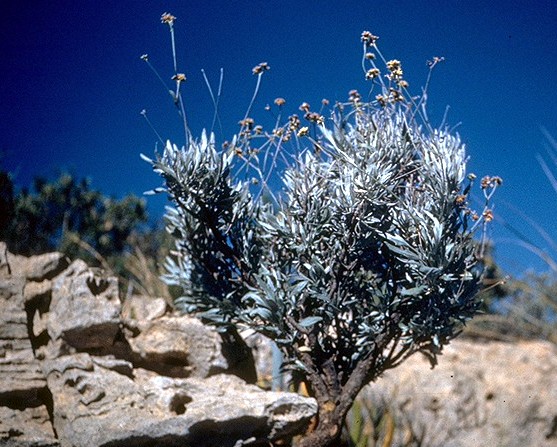A Rubber Plant
Guayule rubber products (credit: Wiki-commons)
The history of developing new crops is a long and tedious affair. Much of the history is littered with agricultural trial and error and largely unsuccessful. Consider the path of the Guayule plant (Parthenium argentatum), an alternative source of natural rubber, which comes from this desert shrub.

Native Guayule (Parthenium argentatum), Texas (credit: Wiki-commons)
Guayule is a plant native to the deserts of the southwestern US and Mexico. It produces a natural latex that can be extracted and purified to make high-quality gloves, medical devices, and other natural rubber products. The industrial properties of guayule have been known for well over a century. Thomas Edison, Henry Ford, and others thought the hardy plant would be useful in making tires for their early vehicles. In the 1920s, research was initiated to domesticate the guayule plant and a California company produced 1400 tons. The rubber from guayule was replaced during World War II by latex from the rubber tree (Hevea brasiliensis), a tropical tree that produces higher latex yield. After the war, large-scale guayule farming collapsed due to this cheaper source of latex before any genetics or plant breeding had been applied to the drought tolerant shrub.
Times are changing, and interest in guayule has come again. Currently, two companies are producing its rubber and the Yulex Corporation has developed a partnership with Patagonia, the outdoor clothing company, to produce a wetsuit made from a blend of natural rubber and neoprene (60% guayule, 40% neoprene), reducing dependence on synthetic neoprene. Additionally, companies like Bridgestone Tires are experimenting with guayule to develop a new generation of rubber tires.
Commercial development of a new crop requires many steps to realize its potential. In the case of guayule, more than a century has passed since the plant's natural rubber discovery to its now limited production. There are millions of other plants waiting for their own unique qualities to be realized and utilized. Unfortunately, fewer and fewer people seem willing to spend a lifetime as plant researchers or crop champions. Too bad!
WHB